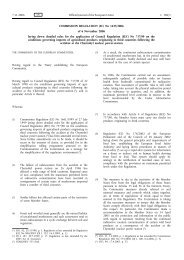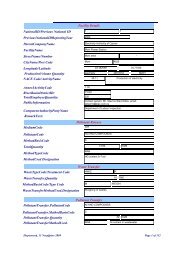Non binding guide to good practice for implementing Directive
Non binding guide to good practice for implementing Directive
Non binding guide to good practice for implementing Directive
- No tags were found...
Create successful ePaper yourself
Turn your PDF publications into a flip-book with our unique Google optimized e-Paper software.
Are you exposed <strong>to</strong> shock (or jolts)?The greatest risk from vibration exposure is believed <strong>to</strong> come from exposure <strong>to</strong> shock vibration. Shock vibrationmay arise from poor road surfaces, driving <strong>to</strong>o fast <strong>for</strong> the terrain, or incorrect set-up of the seat suspension.Scrapers may generate high levels of shock vibration when driving over diffi cult ground. Some heavily ladenvehicles may transmit shocks and jolts <strong>to</strong> the driver with hard use of the brakes.Do you need <strong>to</strong> adopt poor postures or per<strong>for</strong>m manual handling tasks?Poor cab layout or poor visibility can result in stretching and twisting, or may confi ne the driver <strong>to</strong> a fi xedposition <strong>for</strong> long periods. These poor ergonomic environments, either alone or combined with whole-bodyvibration exposures, can result in back and other musculoskeletal injuries.Do the manufacturers of the machinery warn of risk from whole-body vibration?If you are using a machine that may put the users at risk of vibration injury, the manufacturer should warn youabout it in the handbook.Do workers report back disorders?Evidence of back injury means that ergonomic risks and vibration exposures need <strong>to</strong> be managed.PART II Guide <strong>to</strong> <strong>good</strong> <strong>practice</strong> on Whole-Body Vibration – CHAPTER 2 EVALUATION OF RISK67


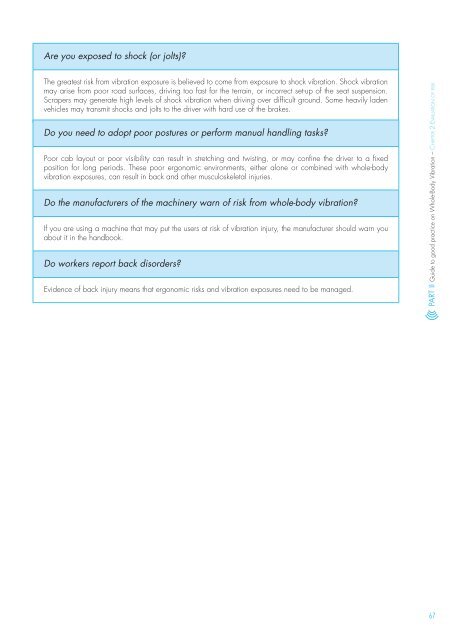




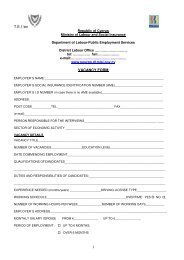

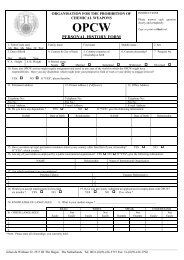
![Hadjimichael[1].pdf](https://img.yumpu.com/33937965/1/190x135/hadjimichael1pdf.jpg?quality=85)

